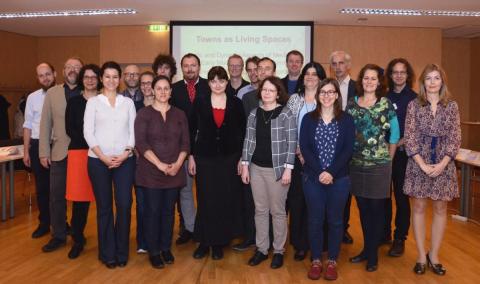Conference in Vienna with Faculty and Alumni of the Medievel Studies Department: “Towns as Living Places: Static and Dynamic Aspects of Medieval and Early Modern Urban Communities," Oct, 2017

“Towns as Living Places: Static and Dynamic Aspects of Medieval and Early Modern Urban Communities” was the title of a conference held between 4-6 October 2017 in Vienna as a joint workshop of the VISCOM project carried by the University of Vienna and the Austrian Academy of Sciences and the Hungarian Atlas of Historic Towns project of the Institute of History of the Hungarian Academy of Sciences, coordinated by Magdolna Szilágyi, research fellow of the Institute and alumna of the Department of Medieval Studies. The organizers were Judit Majorossy, also a Medieval Studies alumna, currently working at the University of Vienna, and Elisabeth Gruber, research fellow at the University of Salzburg The principal aim of the conference was to discuss the possibilities of using historical town atlases as sources of comparative research into urban history. The papers focused on the topographical development of towns in Austria, Hungary and Bohemia between the thirteenth and eighteenth centuries. In each session researchers representing different disciplines (history, archaeology, art history and geography) compared urban topographies from ecclesiastical, social, economic, defensive and power aspects. Katalin Szende, the principal investigator of the Hungarian Atlas of Historic Towns project and Head of the Department of Medieval Studies held an opening talk focusing on the production and usage of the Hungarian Atlases. This project was also represented by Medieval Studies PhD Student András Vadas discussing mills and fishponds in town moats, Medieval Studies alumna Edit Sárosi speaking about market towns, and Magdolna Szilágyi, speaking about the fortification of the towns. The detailed program of the conference is available in the attachment.